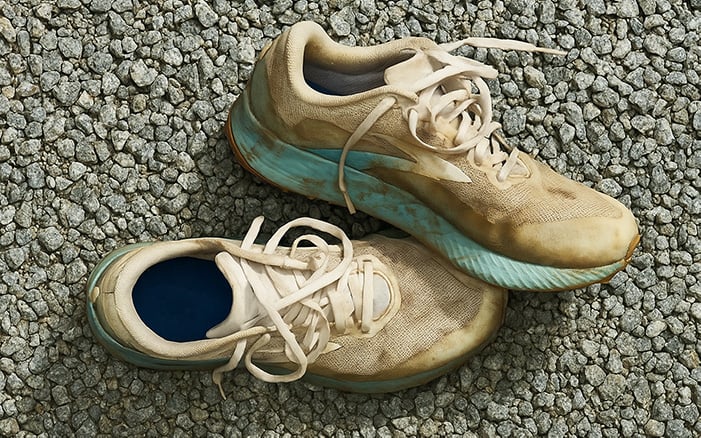That nagging ache in your knees. A strange foot soreness that wasn’t there last week. A general “meh” feeling on runs that used to feel easy. Sometimes the problem isn’t your training plan or recovery, it’s your shoes. But knowing exactly when to replace them—that’s where things get tricky.
We’ve all heard the classic advice: change your running shoes every 300–500 miles. But these days, with new materials, more shoe types, and varied running habits, that one-size-fits-all rule doesn’t really fit anymore.
The old 300-500-mile rule doesn’t work for everyone
The mileage rule was a useful benchmark when running shoes were more uniform in design. Now? Not so much. Max-cushioned trainers, carbon-plated racers, minimalist trail shoes—they all wear differently. Add in body type, gait, terrain, and how often you run, and it’s easy to see why Runner’s World recently called the 300–500 rule “outdated.”
Some shoes might last well beyond 500 miles. Others lose their bounce much sooner. Instead of obsessing over numbers, pay attention to how the shoes feel underfoot.

Your habits can change the rules
Shoe lifespan depends as much on how you run as how far. A light runner who trains on grass will get more life from a shoe than a heavier runner on concrete. Doing speedwork or hills adds more wear than easy miles.
Using your running shoes for everyday errands? That counts too. Walking compresses midsoles and wears the outsole, even if you’re not clocking miles in Strava.
Rotating between two pairs not only extends shoe life, it can also reduce injury risk by varying foot loading patterns.
What your body’s telling you
Your body is often the first to raise the red flag. If your usual routes start to feel hard, or you’re feeling sore in new places (especially the knees, shins, or hips), it could be your shoes. Midsole foam compresses over time, and once that spring is gone, your joints take more of the impact.
Another cue: subtle changes in your stride. If you catch yourself landing differently or favoring one foot, your shoes might be pushing your form out of balance.
Related:6 Signs It’s Time to Replace Your Running Shoes
A new pair test
Not sure if your shoes are truly done? Find a new pair of the same model (or something similar) and try them on. If the difference in cushioning and fit feels like night and day, your current pair is ready to retire.
Visual checks that matter
Some signs of wear are obvious—holes in the upper or rubber worn smooth. But others are more subtle:
- Your shoes slump or tilt when placed on a flat surface
- Deep creases in the midsole sidewalls
- The heel collar feels stiff, or has lost its shape
- You need to tighten laces more than usual to feel secure
Don’t wait until the outsole looks like a bald tire. By then, your legs have probably already paid the price.
How to track usage
You don’t have to log every mile obsessively, but it helps to have a rough idea. A few simple methods:
- Write the date of first use on the inside tongue or box
- Link your shoes in a running app that tracks mileage
- Set a 3–4–month calendar reminder for a quick shoe check
Even casual tracking helps avoid the trap of running in worn-out shoes just because they “still look okay.”
Related: Avoid These 5 Sneaky Gear Mistakes on Race Day
Final thoughts: Comfort over numbers
At the end of the day, shoes are tools. When they stop doing their job—absorbing impact, supporting your stride, and making running feel smooth—it’s time for a new pair. Don’t cling to them out of habit or nostalgia. Your body knows before your tracker does.
There’s no single number, but there is a simple rule: if your shoes don’t feel right anymore, they probably aren’t.








